16-05-2025

There never seems to be enough time to see everything you want to see in Iceland. However, sometimes, visitors have just a short time to see as much as possible. With the possibility of scheduling a longer stopover, 36 hours in Iceland is becoming more common. If you’re limited on time, this guide will help you decide how to make the most of your stopover.
Is 36 hours in Reykjavík or Iceland ever really enough? For the most part, 36 hours is only the tip of the iceberg, but you can still have a great time if you choose to rent a car and make the most out of every stop. With careful planning and a little luck with the weather, you can see a lot in just 36 hours without sacrificing your sleep.
The answer to this question also depends on the weather. 36 hours in Iceland is more feasible in the summer than winter due to the limited daylight and potential poor weather conditions that come with winter.
Getting around is one of the biggest factors when you’re planning 36 hours in Iceland. While you could take a tour during that time, doing so significantly limits what you can see in a short period. However, renting a car will give you more flexibility and allow you to tailor your trip to the sights you want to see.
Flexibility is one of the best reasons to rent a car for any trip, but when you’re limited to a 36-hour stopover, self-driving is the best option. You can choose the sights you want to see, head in any direction you want, and spend as much time as you like at each stop. You can spend more time on the road without the limits of an organized tour.
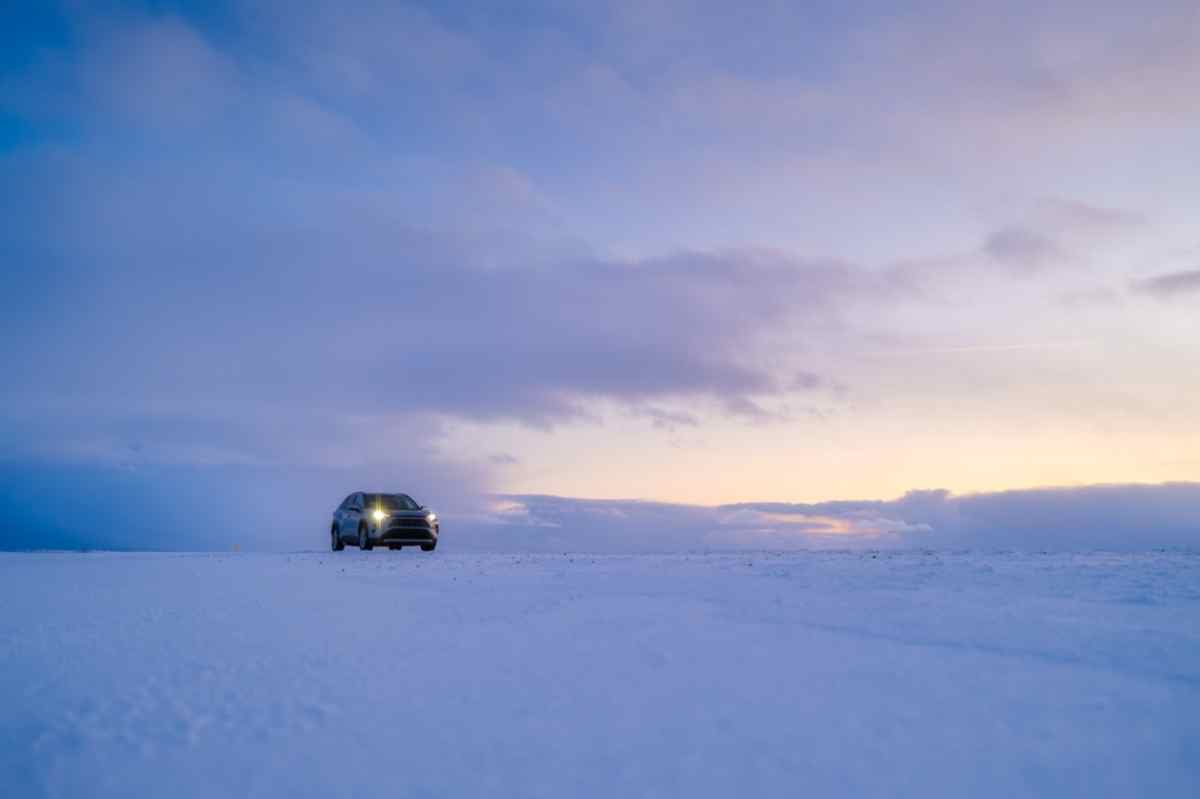
When planning your 36 hours in Iceland, you must be realistic about what you can accomplish. Visiting in the winter means seeing less, but if you’re visiting in the summer, you can easily go a bit further, such as along part of the South Coast or even Snæfellsnes Peninsula. You likely won’t be able to reach the north or east, but you can still create a fulfilling itinerary.
Your arrival day may be long or short, depending on what time you arrive in Iceland. How you plan your trip will vary, whether you arrive early and get most of your sightseeing done on day one, or you arrive late and see most things on the next day. As with any trip to Iceland, staying flexible is the key to keeping you safe and ensuring you fully enjoy your stay.
After landing at Keflavík, you will need to first pick up your rental car before you can hit the road. There are only a few rental companies inside the airport, but many of the major agencies are located close to the airport, either within walking distance or a short shuttle ride away. Look for signs from your rental agency to guide you.
When picking up your rental car, take pictures and videos to document any existing damage. This task may take a few minutes, but it can save you time and money in the long run. Purchasing appropriate insurance can also help you streamline the return process and minimize your risk of owing payments for damages.
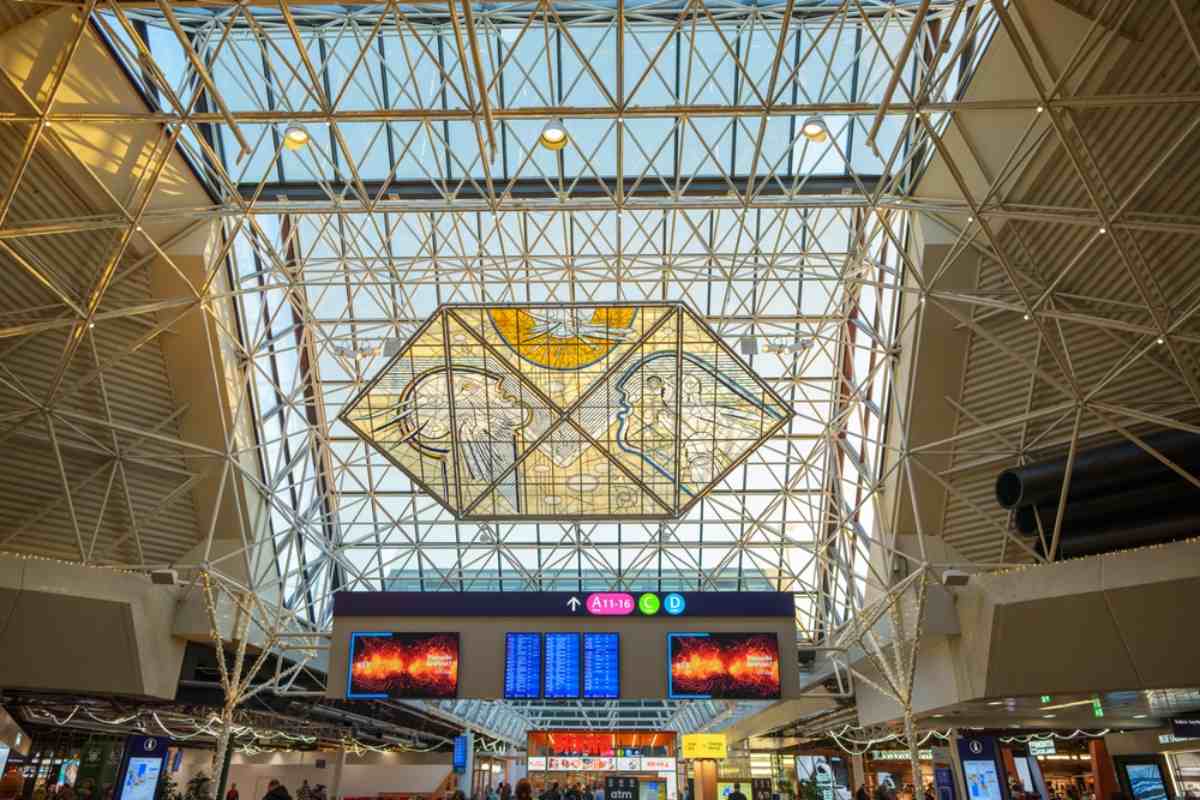
The first stop many visitors make when arriving in Iceland is the Blue Lagoon. This spa is located close to the airport, making it an easy stop after flying in. When booking your time slot, which is highly recommended to avoid missing out, give yourself around two hours to get out of the airport, pick up your rental car, and drive to the Blue Lagoon.
If the Blue Lagoon isn’t appealing to you, there are other options to relax on your arrival day. Sky Lagoon, with its seven-step ritual, is located conveniently near Reykjavík. Another option that is growing in popularity is Hvammsvik, located north of the city along Hvalfjörður. This hot spring pool consists of several hot pots of varying temperatures, along with access to the fjord for cold plunges.
For those interested in saving a little money or getting more of a local experience, the many public pools in Reykjavík are excellent alternatives. These pools are best if you’re traveling with children, as they often have waterslides to keep the kids entertained. They are also significantly cheaper than the tourist lagoons.
After relaxing in the Blue Lagoon (or your chosen alternative), you will head to Reykjavík to spend the night. When leaving the Blue Lagoon, the Reykjanes Peninsula offers several stops. The Bridge Between the Continents, Gunnuhver hot springs, Brimketill, Seltún geothermal area, and Kleifarvatn are some of the most popular options.
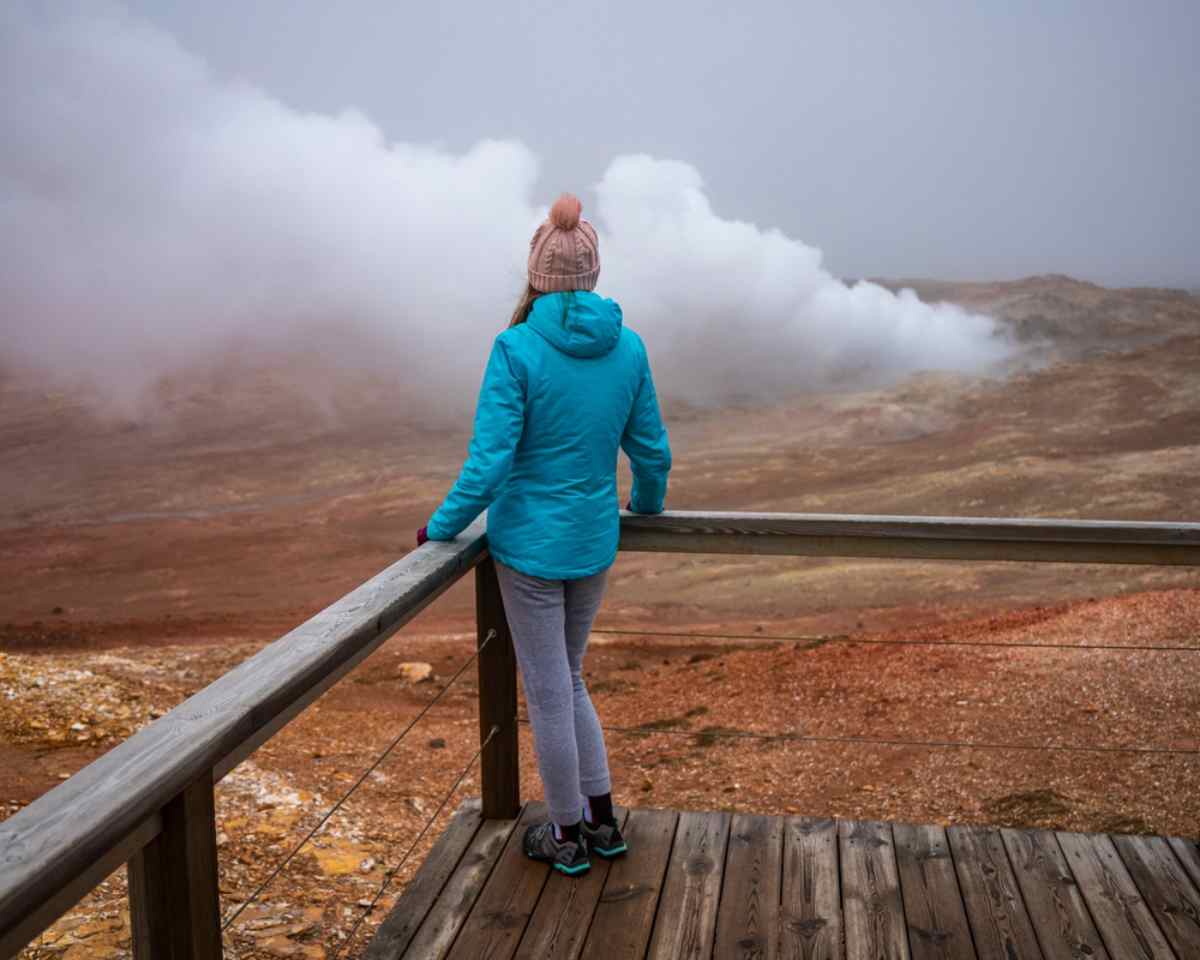
If you have enough time, hiking around the Fagradalsfjall volcano area is a great option. You won’t see fresh flowing lava, but you can see the newest lava fields created during the 2021-2023 eruptions.
The nightlife in Reykjavík can be quite active, making for an easy way to spend your evening in Iceland. Since your arrival day can be quite tiring as you get used to a new time zone, exploring the city and enjoying Icelandic cuisine is the perfect way to close out your first day.
If you’re interested in the active nightlife in Reykjavík, Laugavegur is the place to be. Along this main street in the city center, you will find bars, pubs, and live music. On weekends, these venues stay open well into the early morning hours for those who prefer to stay out most of the night.
The Old Harbour is a great place to enjoy an evening walk. You’ll find many bars and restaurants for your evening meal, along with views of the sea and mountains. You can even catch a glimpse of the Harpa Concert Hall lit up in a colorful display. Hallgrímskirkja is also often lit up at night. Some museums in the city may have evening events, so be sure to check out their schedules.
In the early evening, you’ll have more options. Fly Over Iceland can give you a great overview of the country without leaving your seat. The Harpa Volcano Express is a new immersive show that highlights Icelandic volcanoes and earthquakes. The Lava Show is another great option to learn more about the volcanoes.
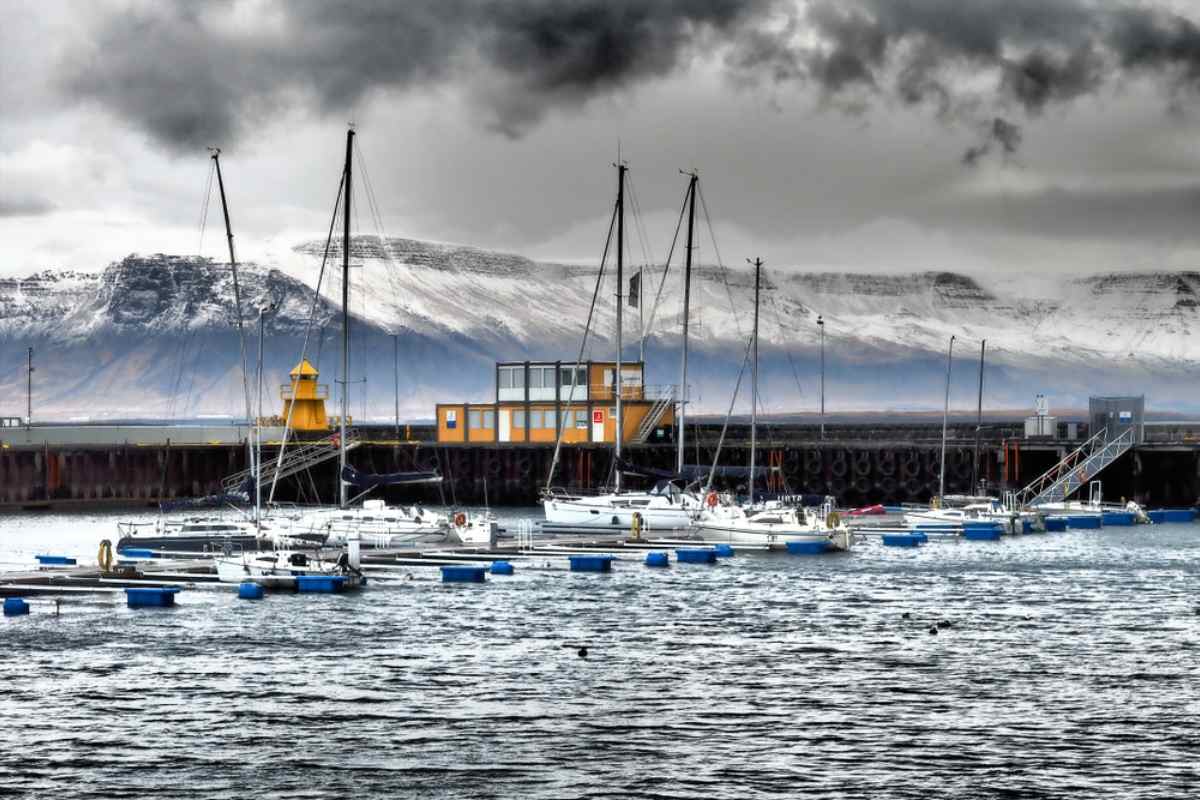
There’s no shortage of restaurants and dining options to round out your evening in Reykjavík. The hot dogs at Bæjarins Beztu Pylsur are a great low-cost option, as are the sandwiches at Hlöllabátar. Both options are generally open late, well beyond the other restaurants in the city.
If you’re looking for the best restaurants in the city, regardless of the price, you can find great options. The city has two Michelin-starred restaurants: Dill and ÓX. For traditional Icelandic food, consider Messinn, Mattur og Drykkur, or Fiskfélagið. If the people in your group have varying tastes, a food hall like Hlemmur Food Hall can give everyone something they will love.
The most effective use of your 36 hours in Iceland is to drive the Golden Circle. This route is one of the most popular tourist routes for many great reasons. It’s easily accessible from Reykjavík and gives you a glimpse of everything the country offers. It’s the perfect introduction to Iceland when you have a short time to visit.
The best thing you can do is to get an early start from Reykjavík to get the most out of your time. Beating the tour buses is well worth it to avoid the crowds at some of the most popular sights along the Golden Circle. Even leaving as little as one to two hours before most tours start can give you a great head start.
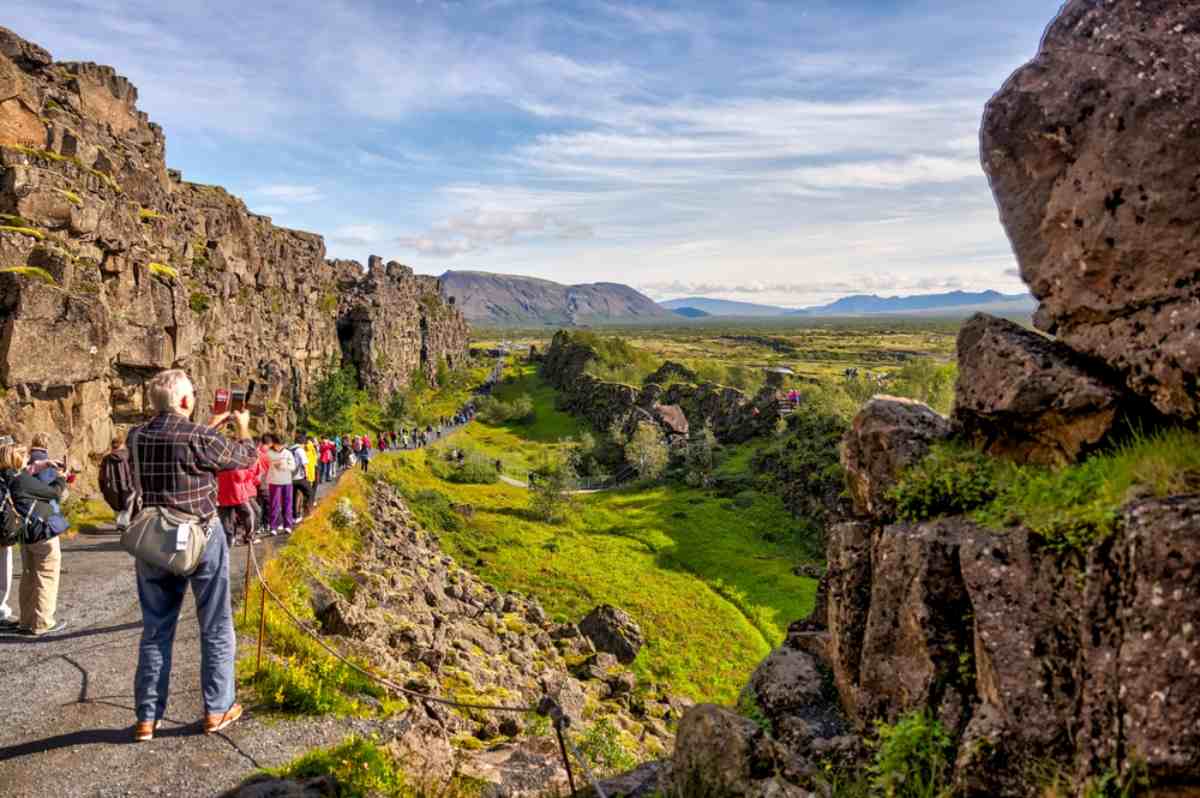
Þingvellir is the first stop along the Golden Circle route when approaching from Reykjavík. This national park is a UNESCO World Heritage Site and allows visitors to walk between the North American and Eurasian tectonic plates. It’s also the location of the original Icelandic parliament, one of the oldest parliaments in the world.
The Visitor’s Centre is a great place to start, giving you a glimpse of the entire area from above. You can hike trails from this point or drive to several other parking areas to hike different spots. Some popular areas of the park include Silfra, Öxarárfoss, and Þingvallavatn.
Your next stop around the Golden Circle is the Geysir geothermal area. This area is home to the geyser that lent its name to all other geysers worldwide. However, Geysir no longer erupts regularly. Instead, its younger sibling, Strokkur, is the main attraction, erupting about every 10 minutes in a spectacular show.
In addition to viewing Strokkur’s eruptions, visitors to this area can hike the trails to view other hot springs, mud pots, and other geothermal features. A restaurant and gift shop is also located here, allowing you to enjoy a snack or meal and do a little shopping.
As you make your way around the main Golden Circle stops, Gullfoss is the next one you will encounter. This impressive, two-tiered waterfall cascades an impressive 32 metres (105 feet) into a canyon before continuing on its way. There are multiple viewpoints, plus a restaurant and gift shop to browse before continuing your journey.
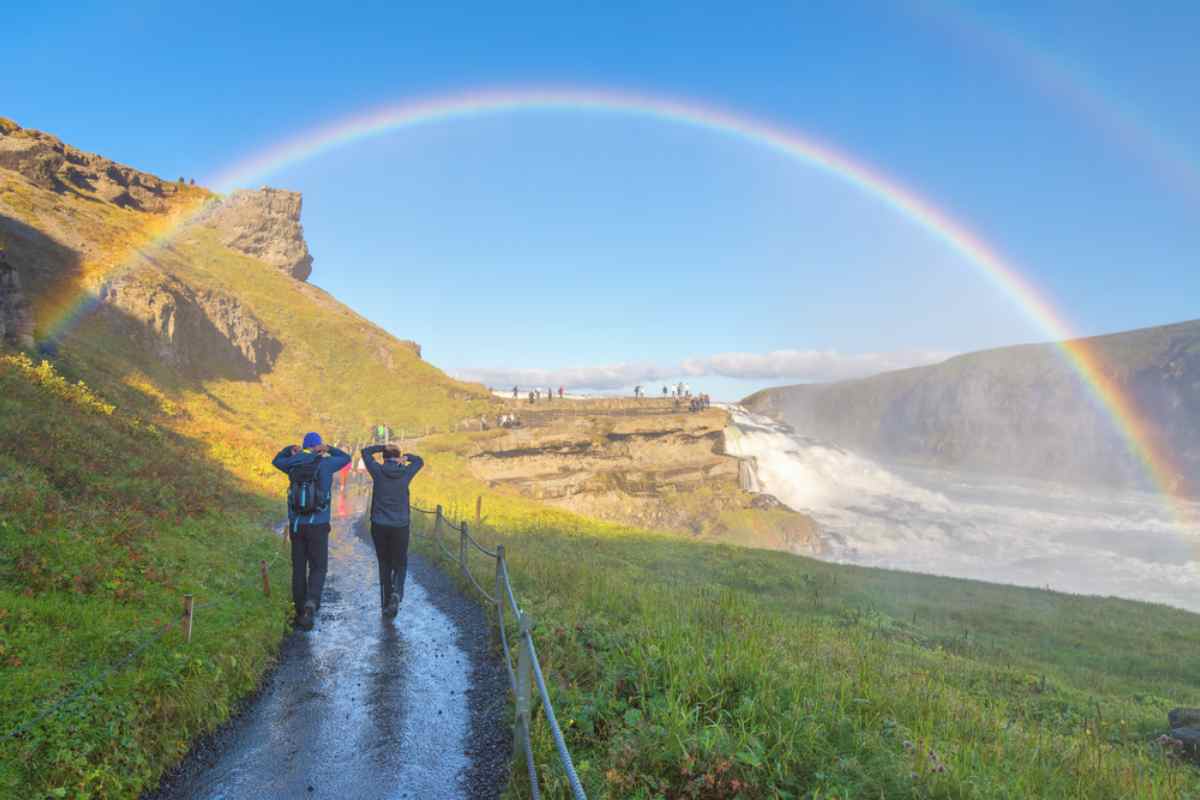
One of the lesser-known stops along the Golden Circle route is Kerið Crater. Although this area has grown in popularity in recent years, it is still a stop not everyone makes. The contrast between the colorful crater and the blue water of the lake offers a stunning perspective. This site is accessible year-round, and the lake is often frozen in winter.
While many visitors choose the traditional stops on the Golden Circle, if you’re looking for a different travel style or have already visited Iceland before, there are alternatives to spend your 36 hours in Iceland. The following are some ideas based on varying travel styles to help you choose the best stops for your trip.
Those who prefer some adventure during their 36 hours in Iceland will find great options in the Golden Circle area. The Siflra fissure is a popular spot for snorkeling. Although the clear water doesn’t have any sea life to observe, there is nowhere else on the planet that you can snorkel between the tectonic plates.
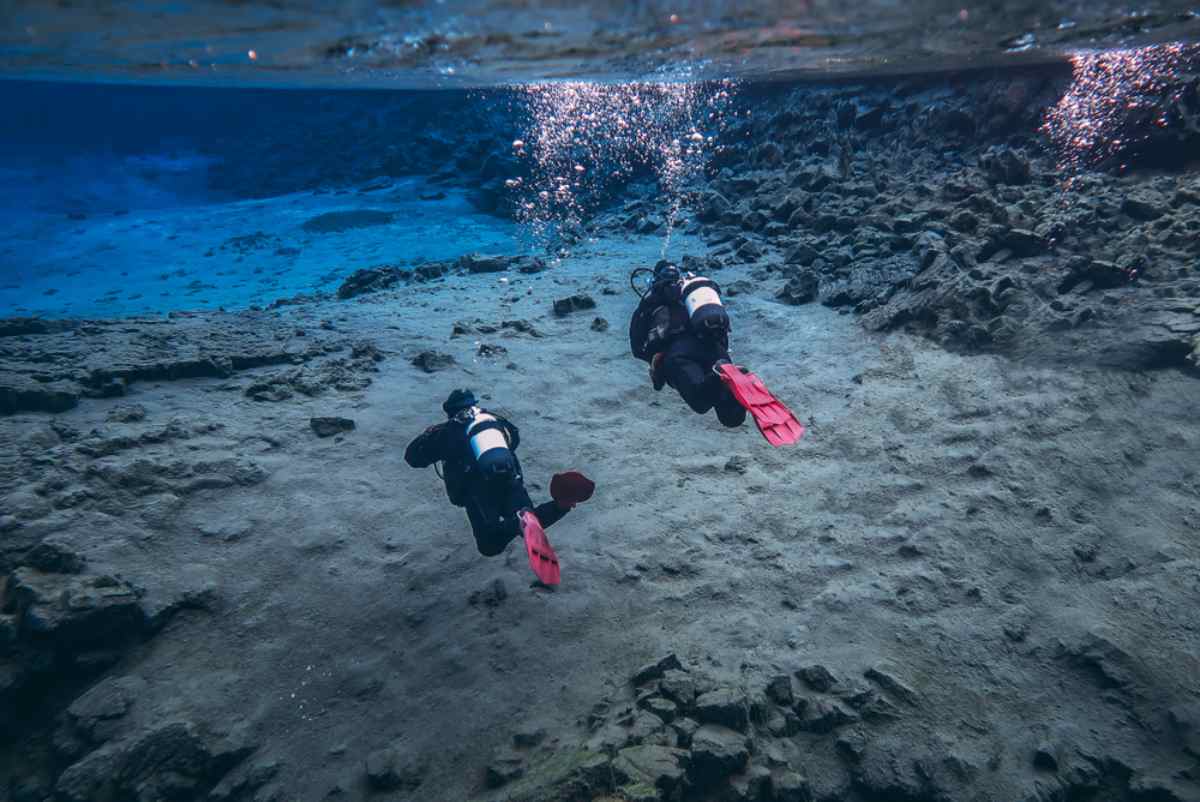
If snorkeling doesn’t appeal to you, another adventure activity available year-round is snowmobiling on a glacier. These tours generally leave from the Gullfoss area, driving you up onto the nearby glacier where you spend time driving around on snowmobiles. It’s a thrilling way to experience the glaciers up close.
The Golden Circle is filled with natural sights, but if you’re a true nature lover, spending some time in natural hot springs is a great way to enjoy the country. The Secret Lagoon is conveniently located within the Golden Circle and is one of Iceland’s oldest swimming pools. You’ll love soaking in the natural surroundings.
If you want an even more natural hot spring option, the Reykjadalur hot springs hike isn’t far from the main Golden Circle route. Located in Hveragerði, the hike is about three kilometres each way and takes about 45-60 minutes one way. Once you reach the end of the trail, you can soak in the warm river, enjoying the natural surroundings. Entry is free, but there is a parking fee.
While the Golden Circle is filled with natural beauty, photographers are often looking for something more. Instead of spending your 36 hours in Iceland driving the main tourist route, photographers can benefit from choosing the South Coast instead. With iconic waterfalls, this area of Iceland is a photographer’s paradise.
Seljalandsfoss is a beautiful waterfall that cascades 60 metres (197 feet) into the pool below. The trail goes close to and behind the waterfall, giving visitors a unique perspective. It’s a great place for photographers to capture the waterfall from many angles, capturing the light perfectly in every shot.
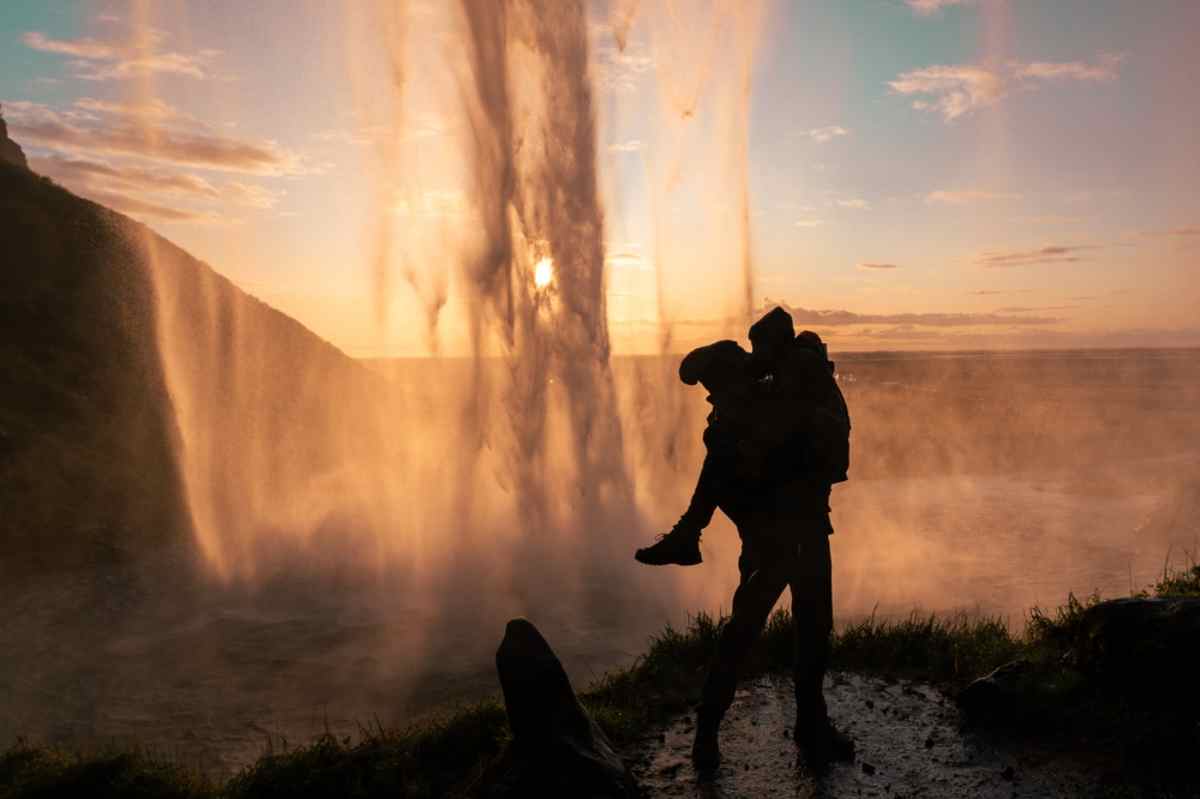
Further down the road, Skógafoss offers more opportunities to capture one of the most iconic waterfalls in Iceland. This waterfall drops about 60 metres (200 feet) and is 25 metres (82 feet) wide, making it one of Iceland’s largest waterfalls. The light often creates rainbows at the waterfall.
As your flight time approaches, you will need to head back toward the airport. You can drive the Ring Road into Reykjavík before continuing to Keflavík, or drive Route 427 along the south edge of the Reykjanes Peninsula. Both options will get you to the airport, but be sure to check road conditions to ensure the roads you want to take are open.
How much time you need to allow for the airport depends on several factors. If you are continuing to the EU or other Schengen countries, you can get through the airport more quickly. However, if you are traveling to North America or non-Schengen destinations, you should give yourself about three hours to get through check-in, security, and passport control.
You will also need to allow time to return your rental car. If you purchased full insurance, the return process is generally quick. However, if your rental car needs an inspection before you leave, it is best to allow about an hour for your car return. This means you should be at the airport between two and four hours before your flight, depending on your destination.
When returning your rental car after 36 hours in Iceland, there are a few things you must remember. First and foremost, your rental company will want to inspect the vehicle for damage, especially if you didn’t purchase full insurance. If any damage exceeds your coverage, you may need to pay the costs upfront. This is also the case if you used third-party insurance.

It’s also important to return the vehicle with a full tank of gas to avoid the high fees rental companies charge for topping off the tank. There is an N1 station near many of the rental companies. However, if you want to fill up before entering the airport area, you will find several options, including Orkan and Atlantsolía, that may have slightly lower prices.
Having just 36 hours in Iceland barely scratches the surface of what you can experience in the country, but is it worth it? The answer depends on you. While it may not be worth it if it’s the sole purpose of your trip, it can be an excellent option as a stopover to or from other locations in Europe or North America.
If you do decide to spend 36 hours in Iceland, renting a car is your best option to give you flexibility to see and do what you want. With a rental car, you can go wherever you wish and create the perfect itinerary to make your visit well worth it.